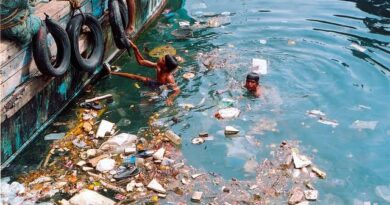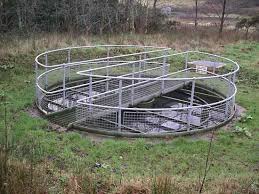An In-Depth Look at Hazardous Waste Disposal in San Diego
Hazardous Waste Disposal in San Diego is a crucial service that helps keep the city and its residents safe. Hazardous waste includes things like chemicals, batteries, and old electronics that can be harmful if not disposed of properly.
In San Diego, there are specific rules and regulations for disposing of hazardous waste. This is to protect public health and prevent environmental contamination. Residents and businesses must follow these guidelines to ensure that hazardous waste is handled safely and responsibly.
One option for hazardous waste disposal in San Diego is to take it to a designated collection facility. These facilities are equipped to handle hazardous materials and ensure that they are disposed of properly. Residents can drop off their hazardous waste at these locations during specified hours.
In addition to collection facilities, San Diego also offers special collection events where residents can bring their hazardous waste for disposal. These events are held periodically throughout the year and provide a convenient way for residents to get rid of their hazardous materials.
San Diego also has programs in place to help residents properly dispose of hazardous waste. These programs provide information and resources to educate residents about the dangers of hazardous waste and the importance of proper disposal. They also offer guidance on how to handle and transport hazardous materials safely.
Proper hazardous waste disposal in San Diego helps protect the environment by preventing contamination of soil, water, and air. It also helps protect public health by reducing exposure to harmful substances.
Community awareness and education are important aspects of hazardous waste disposal in San Diego. By providing information and resources, the city helps ensure that residents understand the importance of proper disposal and know how to dispose of hazardous waste safely.
Hazardous waste disposal in San Diego is an essential service that helps protect public health and the environment. By following proper procedures and utilizing available resources, residents can ensure that hazardous waste is handled safely and responsibly. So, the next time you have hazardous waste to dispose of, remember to do so properly for the well-being of everyone in San Diego.
From biotechnology and manufacturing to healthcare and agriculture, these diverse sectors contribute to the creation of potentially harmful waste materials.
Safely and responsibly managing hazardous waste is of utmost importance, not just for the city’s environment but also for the health and well-being of its residents.
In this article, we will take an in-depth look at hazardous waste disposal in San Diego, exploring the challenges, regulations, and solutions surrounding this critical issue.
Read Also: The Impact of Waste to Compost Business
Hazardous Waste In San Diego

Hazardous waste, as defined by the U.S. Environmental Protection Agency (EPA), is any waste material that poses a substantial threat to human health or the environment due to its physical, chemical, or biological characteristics.
This type of waste includes a wide range of materials, from industrial chemicals and solvents to medical waste and contaminated soil.
Hazardous Waste Generation in San Diego

San Diego’s diverse economy is a significant factor in the generation of hazardous waste. Some of the major industries in the region that produce hazardous waste include:
1. Biotechnology and Pharmaceuticals
San Diego is a hub for biotechnology and pharmaceutical companies, many of which deal with potentially dangerous chemicals and materials in their research and development processes.
This sector generates a considerable amount of hazardous waste, including chemical residues, expired medications, and contaminated laboratory equipment.
2. Manufacturing
The manufacturing industry in San Diego produces hazardous waste through processes like metal finishing, chemical coating, and the production of electronic components. These activities often result in the release of harmful chemicals and byproducts that need proper disposal.
3. Healthcare
Hospitals, clinics, and other healthcare facilities generate a significant amount of hazardous waste, such as used needles, infectious materials, and chemical waste. Proper disposal is crucial to prevent contamination and the spread of diseases.
4. Agriculture
Agriculture in the surrounding areas of San Diego contributes to hazardous waste through pesticide and herbicide usage, which can contaminate soil and water sources if not managed correctly.
Read Also: Practical Steps to Convert Paper Wastes Into New Paper Products
Hazardous Waste Regulations in San Diego

To address these challenges and ensure the safe disposal of hazardous waste, San Diego has a set of regulations and guidelines in place. Here are some of the key aspects of hazardous waste regulations in the city:
1. Hazardous Waste Identification
One of the fundamental steps in managing hazardous waste is identifying whether a material is hazardous. The Resource Conservation and Recovery Act (RCRA) defines hazardous waste characteristics, such as ignitability, corrosivity, reactivity, and toxicity, to help classify waste materials.
2. Waste Generator Requirements
Businesses and organizations that generate hazardous waste must adhere to specific requirements for waste storage, labeling, and record-keeping. These regulations ensure that waste is properly managed from the point of generation.
3. Manifest System
Hazardous waste disposal in San Diego follows a manifest system. This system involves the use of a manifest, a shipping document that tracks the movement of hazardous waste from the generator to the disposal facility. This process ensures transparency and accountability in the disposal process.
4. Treatment, Storage, and Disposal Facilities (TSDFs)
San Diego relies on Treatment, Storage, and Disposal Facilities (TSDFs) for the proper handling of hazardous waste. These facilities are highly regulated and must meet stringent environmental standards to ensure safe waste management.
Sustainable Solutions and Innovations Of Hazardous Waste In San Diego
In response to the challenges of hazardous waste disposal, San Diego is also exploring sustainable solutions and innovative approaches to minimize the environmental impact and ensure the safety of its residents.
1. Hazardous Waste Minimization
One key strategy is hazardous waste minimization, which focuses on reducing the generation of hazardous waste at its source. By adopting cleaner technologies and implementing waste reduction practices, businesses can significantly decrease their waste output.
2. Recycling and Resource Recovery
Recycling hazardous waste materials whenever possible is another sustainable approach. Certain hazardous materials can be reclaimed and reused safely and responsibly, reducing the need for disposal.
3. Public Awareness and Education
Raising public awareness and educating businesses and residents about hazardous waste disposal is essential. This includes promoting the proper handling of hazardous materials, encouraging recycling, and facilitating access to disposal resources.
4. Research and Innovation
San Diego’s thriving research and technology sectors are also contributing to the development of innovative solutions for hazardous waste management. From advanced treatment methods to cleaner industrial processes, ongoing research is critical to addressing the issue.
Generally, Hazardous waste disposal is a critical environmental and public health concern in San Diego. The city’s diverse economy, which includes biotechnology, manufacturing, healthcare, and agriculture, generates a significant amount of hazardous waste.
To address this issue, San Diego has established a robust regulatory framework to ensure that hazardous waste is identified, handled, and disposed of safely and responsibly.
Despite the challenges, San Diego is actively exploring sustainable solutions and innovative approaches to minimize the environmental impact of hazardous waste disposal. These efforts include hazardous waste minimization, recycling and resource recovery, public awareness and education, and ongoing research and innovation.
Taking an in-depth look at Hazardous Waste Disposal in San Diego is not only essential for the well-being of the city’s residents but also for the preservation of its natural beauty and environmental resources.
With continued efforts and collaboration among businesses, organizations, and the community, San Diego can work towards a safer and more sustainable future for all.
Read Also: Infectious Bronchitis (in poultry): Description, Damages Caused, Control and Preventive Measures



